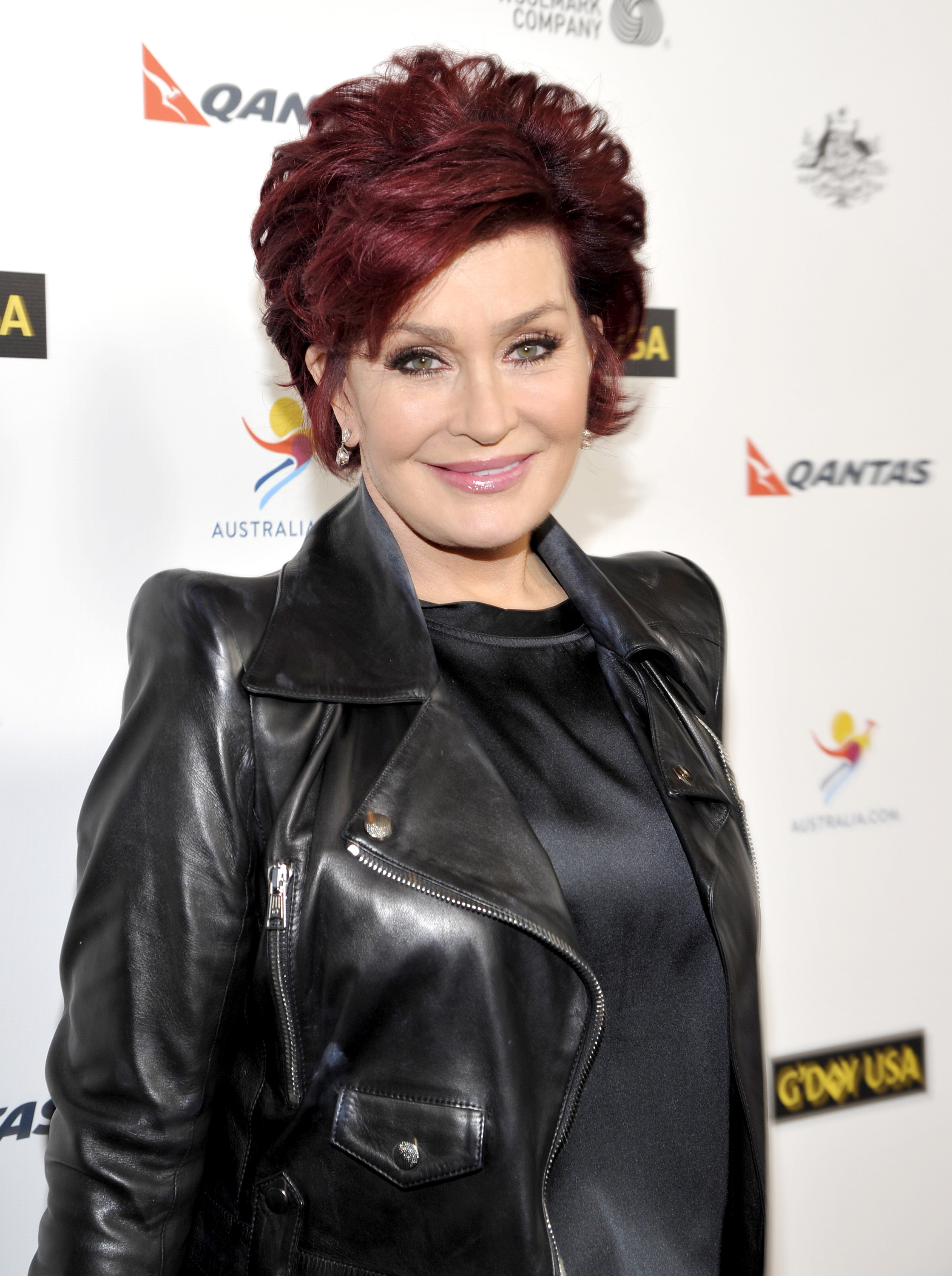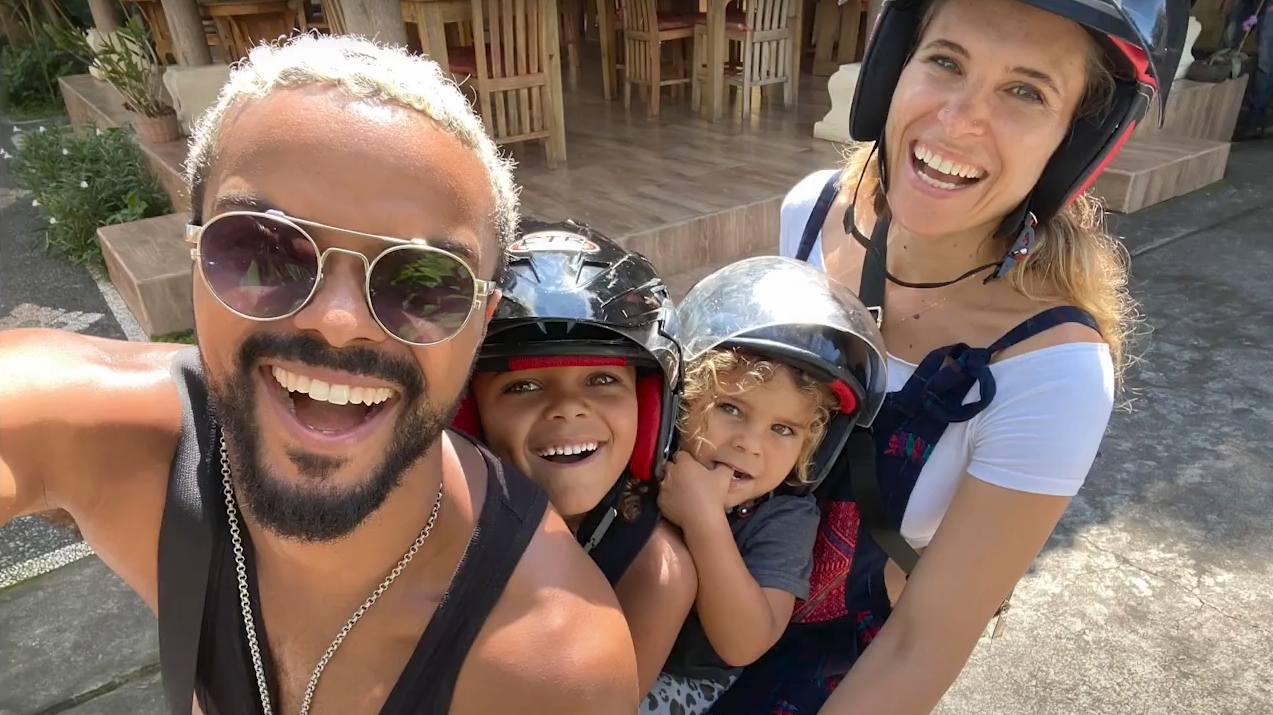Supporting Children Battling Cancer
- Sharon Osbourne using her platform to share Marvel actor, Eka Darville’s 9-year-old son’s brain cancer battle.
- Osbourne, 70, fought a battle against stage three colon cancer diagnosis in 2002 at age 49. After surgery to remove a foot of large intestine and some surrounding lymph nodes followed by chemotherapy, she was deemed cancer-free.
- More than 95 percent of childhood cancer survivors have significant health-related issues because of the current treatment options, and only 4 percent of the billions of dollars spent each year on cancer research and treatments are directed towards treating childhood cancer in the U.S.
- Brain cancer or brain tumors can be cancerous (malignant) or benign (noncancerous) and can affect both children and adults.
- Brain tumors do not always cause symptoms, but they can impact a person's brain function and overall health depending on the size, type and location within the brain.
- Symptoms can include difficulty walking, headaches, confusion, personality changes, vision changes, memory loss and more.
Osbourne shared the heartfelt brief video clip of Mana Ohana, 9, who is the son of actor Eka Darville, best known for his roles in Marvel's "Jessica Jones" and "Power Ranges RPM". The the emotional video, shows Mana smiling and enjoying spending time with his family at the beach. The video then transitions to an emotional cry for help from Mana’s parents after he was diagnosed with multiple malignant brain tumors.
Osbourne's Cancer Battle
Read More
"I didn't want to live the rest of my life with that shadow hanging over me," she added.
Osbourne didn’t make any comments on her post sharing Mana’s condition, but the she’s shared photos of her own grandchildren around Mana’s age and his tough cancer battle tugs the heartstrings of anyone who learns of it.
Mana's Brain Cancer Journey
Mana's parents, Eka and Lila, narrated the video clip shared by Osbourne which details their son's emotional cancer journey. In July 2022, the 9-year-old collapsed on the beach with a "massive seizure" the couple described.
After going to the doctor, Mana was initially misdiagnosed with focal cortical dysplasia, which is abnormal brain cell organization and development leaving the person impacted prone to seizures according to the Epilepsy Foundation.
The seizures painstakingly took a toll on Mana as they lasted for six months. It wasn’t until January 18 of this year, when an MRI revealed Mana's brain had "two large masses…one the size of a peach and the other a walnut" and the tumors were still growing.
Coping with a cancer diagnosis can be tough on any family, especially the Darville family who had been battling symptoms for half a year. Mana underwent surgery in an attempt to treat the tumor but it only proved partially successful as doctors were able to remove 60% of one mass from the cancer warrior. Mana’s parents were told by doctors their son has "high-grade aggressive brain cancer."

Determined to keep a fighter’s spirit, Mana and his parents kept fighting.
"It's now up to us to find a cure for our boy. We've left no stone unturned in or global search for solutions," Ohana's parents said in a hopeful GoFundMe post. They are trying to raise $600,000 to help cover medical costs and so far, they've reached $554,000 in less than a month inching closer to reach their goal.
The next step for the Ohana family is to get the 9-year-old into treatment for the disease.
Understanding Brain Cancer
Brain cancer is the result of brain tumors that can be either cancerous (malignant) or benign (noncancerous) and can affect both children and adults, according to the Cleveland Clinic.
According to the American Society of Clinical Oncology, brain tumors account for 85% to 90% of all primary central nervous system tumors. The central nervous system includes the brain and spinal cord and acts as the main processing center for the nervous system as a whole according to the American Cancer Society. The central nervous system's normal functioning, which involves messages sent from the brain to other parts of the body, become disrupted if tumors are present.
Ohana has multiple malignant brain tumors which means, his tumors are fast-growing. Malignant cancerous brain tumors opposed to non-cancerous benign tumors that are slow growing according to Mayo Clinic.
Battling Childhood Cancer
“More than 95 percent of childhood cancer survivors have significant health-related issues because of the current treatment options, and only 4 percent of the billions of dollars spent each year on cancer research and treatments are directed towards treating childhood cancer in the United States. Since 1980, fewer than 10 drugs have been developed for use in children with cancer while hundreds of drugs have been created exclusively for adults,” according to National Pediatric Cancer Foundation.
The types of treatment a child with cancer receives will depends on the stage and type of cancer the child has according to the National Cancer Institute. Common treatments include: surgery, chemotherapy, radiation therapy, immunotherapy, and stem cell transplant.
Signs and Symptoms of Brain Cancer
Brain tumors do not always cause symptoms, but they can still impact a person's brain function and overall health, depending on their size, type and location within the brain. Tumors that grow big enough and disrupt normal central nervous system functioning can press on nearby nerves, blood vessels or other tissues. The disrupted central nervous system can present in a variety of ways, potentially making it difficult to walk or maintain your balance.
Symptoms brain tumors can cause are similar for children and adults. The Mayo Clinic identified several common symptoms for children with brain tumors which include:
- A fuller soft spot (fontanel) on the skull in babies
- Seizures, especially when there’s no history of seizures
- Abnormal eye movement
- Slurred speech
- Trouble swallowing
- Loss of appetite; or in babies, difficulty feeding
- Difficulty with balance
- Trouble walking
- Weakness or loss of sensation in an arm or a leg
- Weakness or drooping on one side on the face
- Confusion, irritability
- Memory problems
- Personality or behavior changes
- Hearing problems
If any of these symptoms concern you, you should contact your child’s doctor.
Types of Brain Cancer
Primary tumors are "glial" or "non-glial". Glial tumors are composed of glial cells inside the brain while non-glial tumors develop on or in the structures of the brain including nerves, blood vessels and glands.
Benign or noncancerous brain tumors include:
- Chordomas
- Craniopharyngiomas
- Gangliocytomas
- Glomus jugulare
- Meningiomas
- Pineocytomas
- Pituitary adenomas
- Schwannomas
- Acoustic neuromas
Malignant or Cancerous tumors include:
- Gliomas, which make up 78% of cancerous primary brain tumors.
- Astrocytoma
- Ependymomas
- Glioblastoma
- Oligodendroglioma
- Medulloblastoma
Cancer Treatment in Children
Ohana's family hopes to raise enough money to cover 9 to 12 months of treatment. The kind of treatment method Mana may receive depends on the type, size, grade and location of the tumor. Generally, surgery, radiation therapy, radiosurgery, chemotherapy, and targeted therapy are all treatment options according to Mayo Clinic.
In children, most chemotherapy is administered to pediatric cancer patients intravenously into a blood vessel according to Boston Children’s Hospital.
Child cancer warriors may also radiation therapy or stem cell transplant treatment, which is the infusion of healthy stem cells into the body to stimulate new bone marrow growth.
Clinical trials for treatments specific to children diagnosed with cancer typically begins “6.5 years after adult trials” according to the National Pediatric Cancer Foundation. Dr. Elizabeth Raetz, director of pediatric hematology and oncology at NYU Langone's Perlmutter Cancer Center, gives young cancer warriors and their parents reasons to keep hope alive.
"There are also targeted treatments and different immunotherapies that have been studied in adults and have now moved into clinical trials for children and there has been a great deal of excitement in the community about that," Dr. Elizabeth Raetz told SurvivorNet.
As parents navigate the cancer journey with their young cancer warriors, it’s important to remember children’s bodies may react differently to treatments than adults because their bodies are still growing. “They may receive more intense treatments…and they may respond differently to drugs that control symptoms in adults,” according to the National Cancer Institute so it’s important to ask plenty of questions to doctors throughout the cancer journey.
Video: A teen cancer survivor shares what life is like after chemo.
Impact Childhood Cancers Have on the Family and How to Cope
Thankfully Mana's cancer journey is surrounded by supporters most notably his parents. Family members caring for a child diagnosed with cancer can be stressful. Family support not only eases the anxiety of the cancer warrior, the added support helps their loved ones too.
Caregivers of cancer warriors must also watch out for "caregiver burnout" where stress, anger, fatigue and illness emerges from putting another person's needs ahead of your own.
Caregivers who find themselves struggling to care for a cancer warrior should seek out a therapist, or a support group of their own either online or in-person.
Learn more about SurvivorNet's rigorous medical review process.


